Patellar tendon bearing cast (Sarmiento)
1. General considerations
Indications
A patellar tendon bearing (PTB) cast (Sarmiento) may be applied in place of a long leg cast to allow early weight bearing and mobilization of the knee.
This cast is typically applied after initial healing. The timing depends on patient age, weight, and fracture pattern.
The cast is closely molded around the proximal tibial condyles and patellar tendon to allow for weight transmission from the foot to the proximal tibia, off-loading the fracture zone.
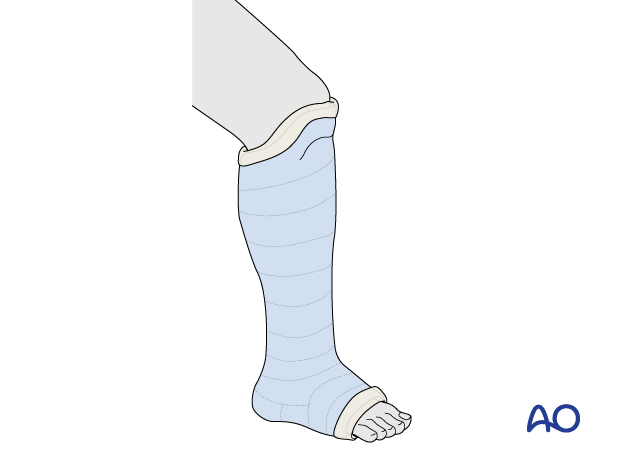
Complications
- Pressure sores
- Skin irritation
- Loss of reduction
- Compartment syndrome
- Thermal burns (avoid using hot water)
2. Preparation
Read the additional material on preoperative preparation.
Material
- Tubular bandage (stockinette) of appropriate size
- Cast padding
- Felt
- Casting material: synthetic, plaster of Paris, or a combination of both
- Water
The water temperature should ideally be between 22° and 25° C.
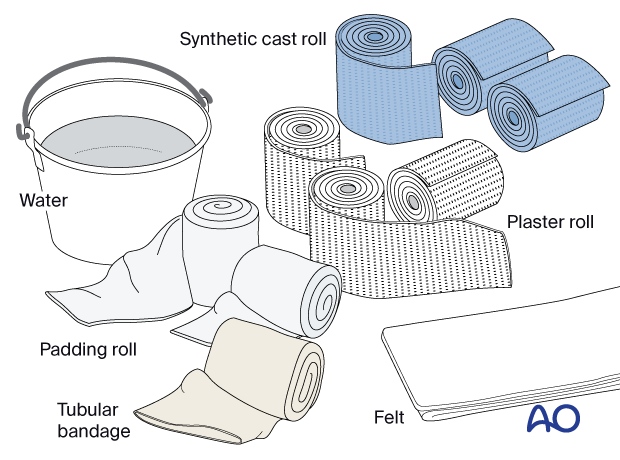
3. Casting
Patient and leg positioning
Place the patient in a supine position with a bolster under the knee to keep it flexed.
An assistant also supports the leg to maintain knee flexion.

Dressing
The cast extends from just below the knee to the base of the toes.
Apply a tubular bandage and cut it slightly longer than the length of the final cast.
The assistant holds the toes, not the stockinette, with the ankle in a neutral position.
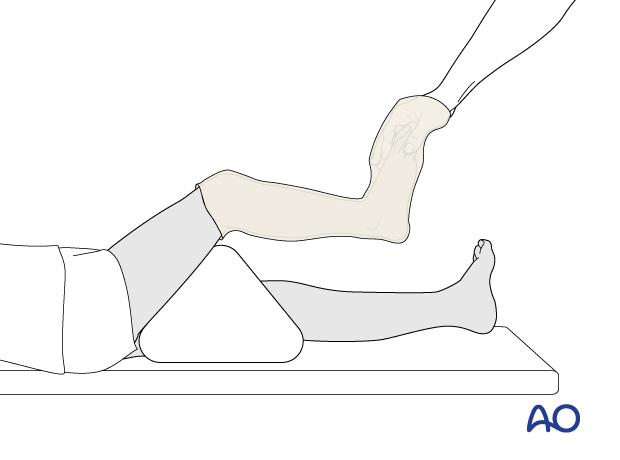
Padding
Add thick felt or additional padding at the free edges of the cast and prominent areas (eg, tibial crest, malleoli, and heel) to prevent pressure sores.
Apply cast padding without creases, overlapping each layer by 50%.
It should be appreciated that, when more padding is applied, there will be less support at the injury site.
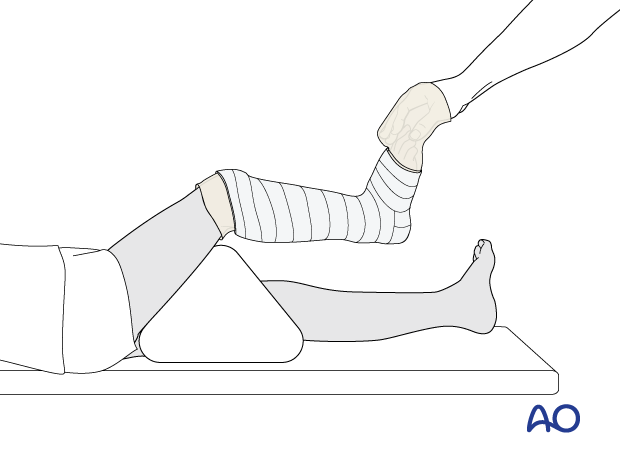
Cast application
Apply the first layer of cast material and overlap each layer by 50%.
A triangular mold should be applied on the level of the proximal condyles and the patella tendon.
Avoid sharp edges at the ends of the cast.
Apply further layers of cast material to produce sufficient stability.
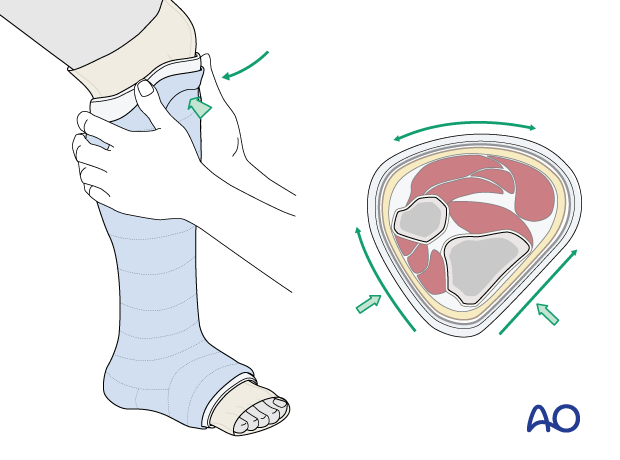
Fold the tubular bandage and padding over the edges of the cast before applying the final layer of casting material.
Ensure that all toes are visible for vascular assessment.
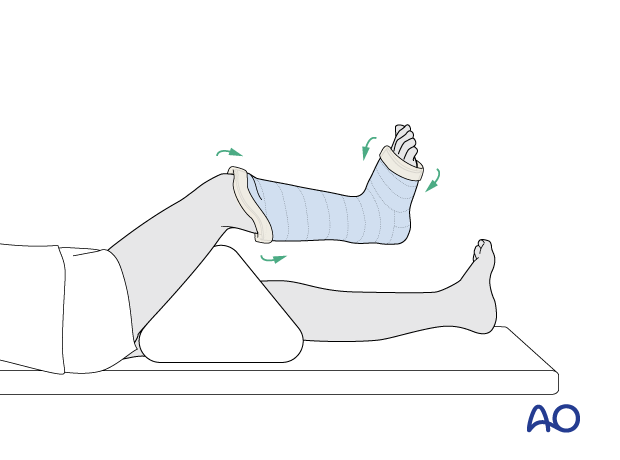
4. Final assessment
After cast application, check the fracture configuration with x-rays in both planes.
Confirm normal toe color and capillary refill at the end of cast application.













